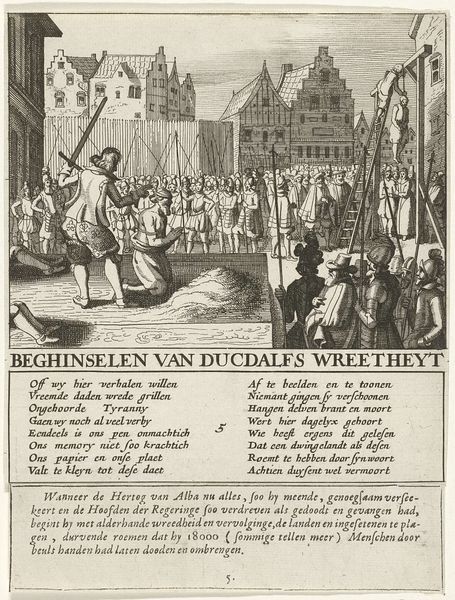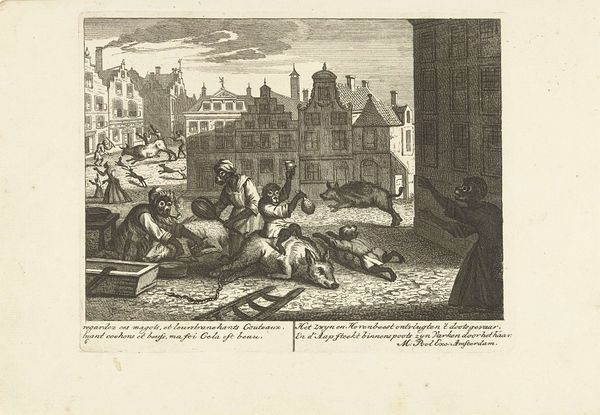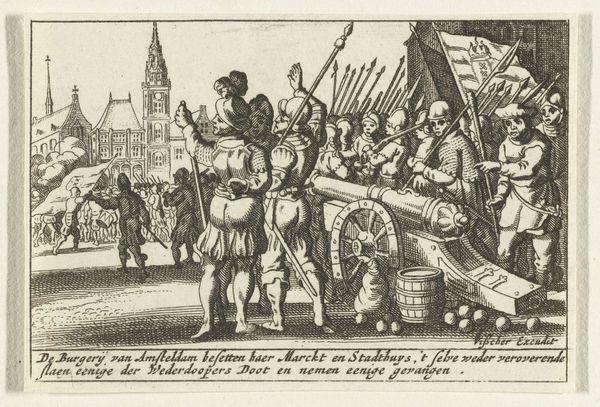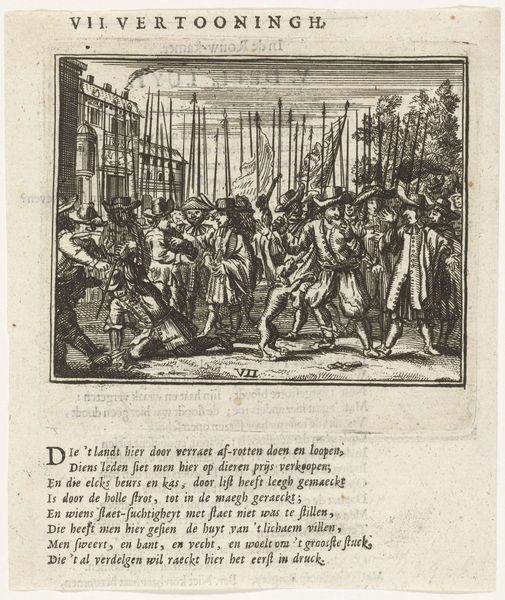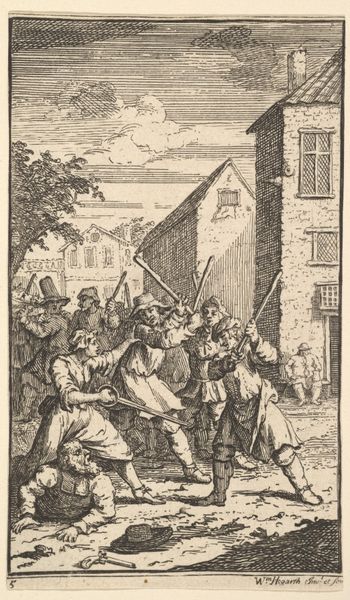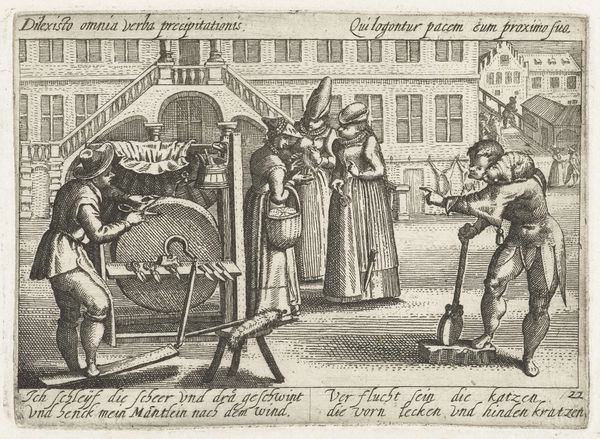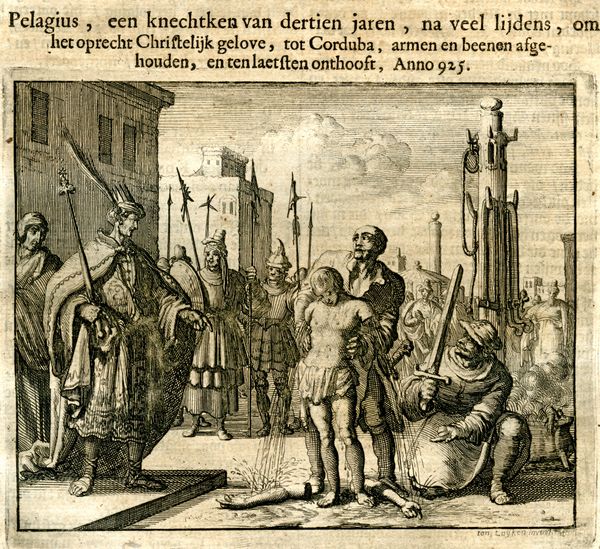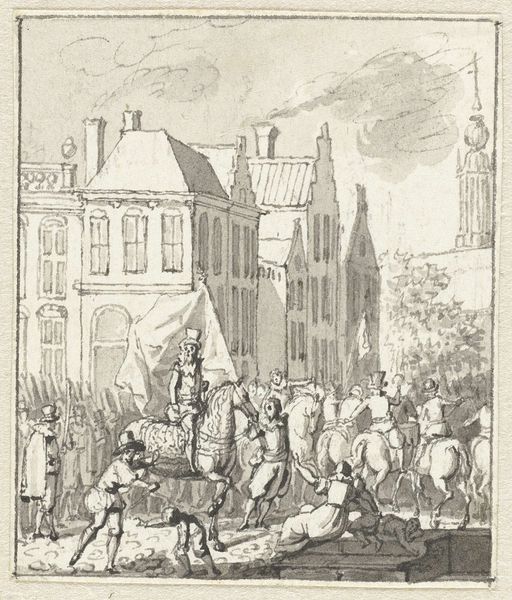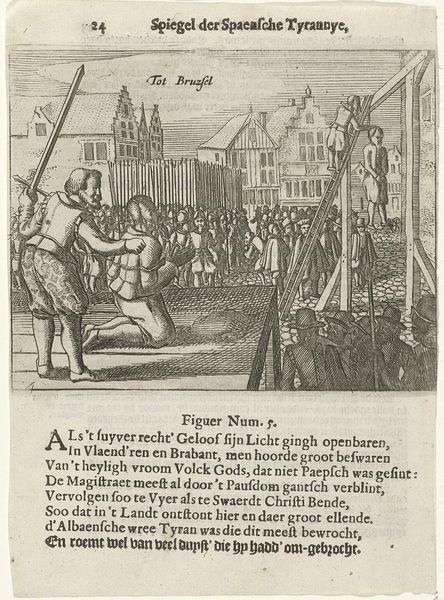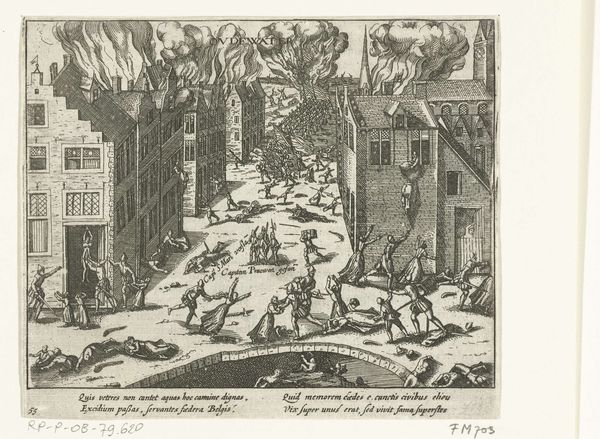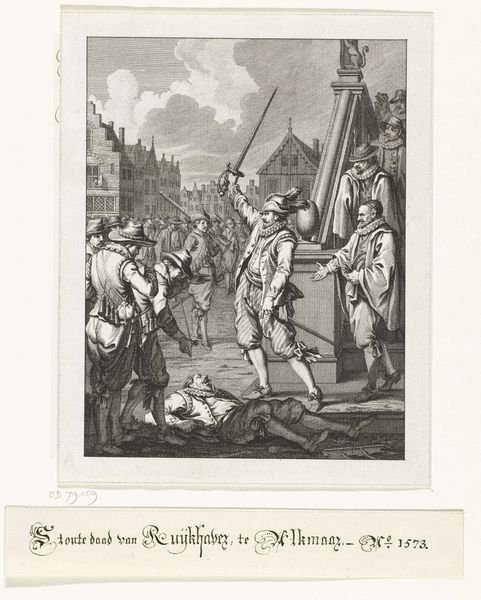
print, engraving
#
narrative-art
# print
#
genre-painting
#
history-painting
#
engraving
Dimensions: height 175 mm, width 135 mm
Copyright: Rijks Museum: Open Domain
Curator: This engraving, likely produced sometime between 1618 and 1624, is titled "Wreedheden te Rotterdam, 1572", which translates to "Atrocities in Rotterdam, 1572". Editor: Goodness, it’s a rather grim scene. A chaotic dance of bodies—some upright, some… not so much. It feels staged, like a macabre theatre production, with that jeering audience of soldiers in the background. Curator: Indeed. This print, etched by an anonymous hand, offers a glimpse into the tumultuous history of the early Dutch revolt. Observe the level of detail achieved solely through the method of engraving, creating such depth with dense cross-hatching. Notice also how the violence plays out against the clean architectural lines and carefully placed figures in the composition. Editor: What I find so compelling is the stark contrast between the rigid formality of the soldiers and the messy reality of violence enacted in the foreground. The artist obviously aimed to display what the impact of such action might be on both the immediate victims and broader public society. Look at those textures. They bring you into the grit and dirt, as well as provide great technical and representational information regarding military uniforms. Curator: It certainly highlights the cold, detached efficiency of the oppressor. The print uses clear and precise linework to portray the horrors inflicted upon the citizens. The contrast between light and shadow dramatizes the scene, adding emotional intensity. Editor: Engravings like this served as a powerful tool of propaganda. Their relative ease of production meant these could quickly reach a wide audience and further enrage an oppressed people into organized revolt. It asks us to engage and confront questions of authority, obedience, and the potential consequences of conflict on human lives, both past and present. Curator: Reflecting on the print, I’m struck by how it reminds us of art's ability to both record history and shape public perception. It reminds us how violence often casts a long shadow. Editor: Yes, indeed. Beyond aesthetics, “Atrocities in Rotterdam” speaks of our intrinsic responsibility, and the powerful intersection of art and resistance to injustice.
Comments
No comments
Be the first to comment and join the conversation on the ultimate creative platform.
